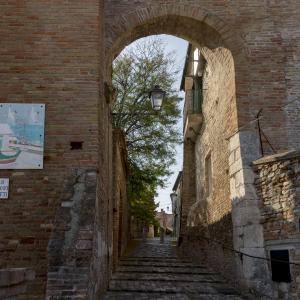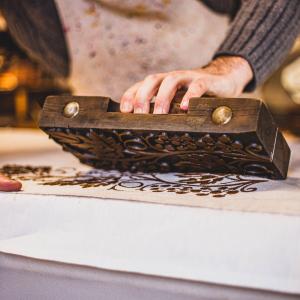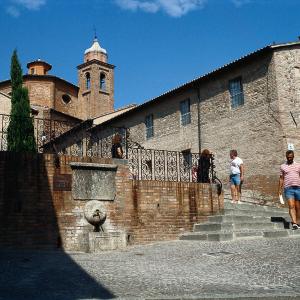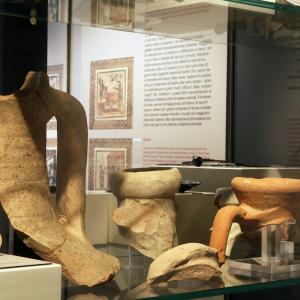Santarcangelo di Romagna the perfect day
There are many reasons why it is worth dedicating at least one day to Santarcangelo:
- the strong Romagna identity and the atmosphere of a large village marked by the right pace of life
- the architectural beauty made up of noble palaces, village houses, alleys and small squares
- the events of international scope that animate it, no less than the village festivals full of aromas and flavours.
Duration: 1 day
Means of transport: on foot
First stop Ganganelli Arch. Imposing and proud
This arco welcomes and greets the city. Since the 1700s it has watched over the square of the same name, erected in honour of their illustrious fellow-citizen turned Pope, Clement XIV.
Second stop Piazza delle Monache. Between history and architecture
It looks like something out of a medieval storybook, with its elegant buildings, an ancient well that who knows how many stories it could tell, and a secret access to one of the most fascinating caves underground.
Third stop Campanone Tower, symbol of Santarcangelo's profile
Looking up, there it is, the Torre del Campanone, a nineteenth-century "giant" that you will surely have glimpsed from afar. It may not be the original tower, the one that guarded the ancient city gate, but with its unmistakable silhouette it is a true symbol of Santarcangelo.
Fourth stop Tufa Caves. Adventures in the heart of the earth
The visit è by reservation only, so be organised. Beneath this hamlet lies a labyrinth of circular spaces, mysterious tunnels, shafts and galleries that are a true architectural spectacle. More than two hundred grottos that criss-cross the entire hillside.
Fifth stop Collegiate Church, an 18th century jewel
Back in the sunlight, enter the majestic Collegiate Church that holds precious works of art. The 14th-century wooden crucifix of the Rimini school and the 17th-century painting by Guido Cagnacci, the very painter born here in 1601.
Sixth stop Ancient Mangano. Between the pages of the past
It is a very rare seventeenth-century example of a wheel press for ironing textiles, still in perfect working order. And in the workshop next door, you can admire the creation of hand-painted fabrics using the ancient and fascinating technique of 'rust printing'. A true return to the origins.
Seventh stop Museum dedicated to Tonino Guerra. Stories told with passion
The refurbished Museum is a tribute to the great poet and scriptwriter who knew how to tell the soul of this land.
Eighth stop MUSAS Historical Archaeological Museum, guardian of local memory
Ospired in the 17th-century Palazzo Cenci, it unveils artefacts and evidence of the history and art of Santarcangelo and its territory. Among its treasures, the 1385 polyptych by the Venetian Jacobello da Bonomo stands out.
Tips for true professionals:
- After so much wandering around, take a regenerating break in the park where the Fontana del Prato Sommerso (Sunken Meadow Fountain) will captivate you with its water features and poetic atmosphere.
- A plunge back in time at the Pieve di San Michele Arcangelo: just a stone's throw from Santarcangelo, è an architectural jewel of rare beauty and charm.
- Hunting for the masterpieces of Eron: sharpen your sights and get ready for an exciting artistic treasure hunt. Santarcangelo è a true open-air museum thanks to the murals of Eron, an internationally renowned street artist.



